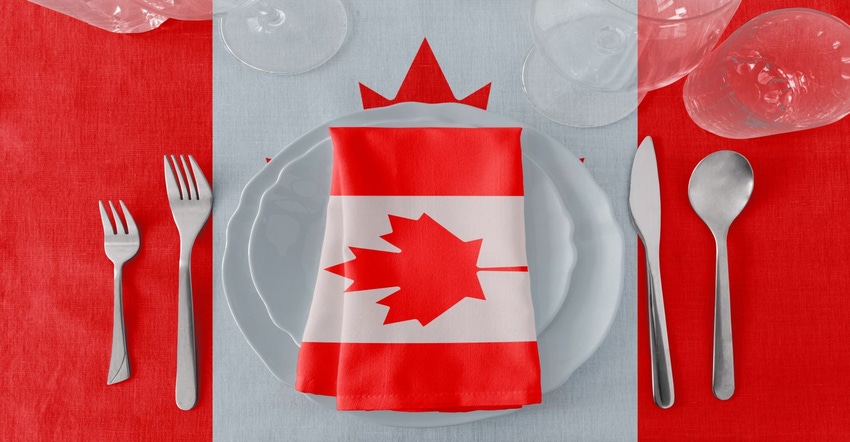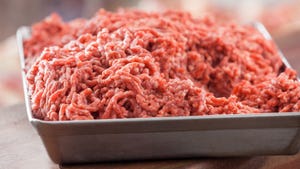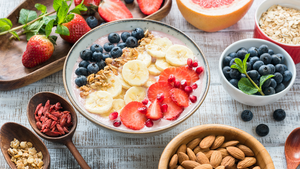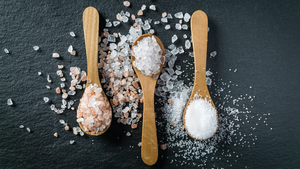Prebiotic fibers in Canada: Regulatory environment, status and claims potential
Health Canada has assessed and accepted several categories of dietary fibers, such as beta-glucans, brans, oligosaccharides, resistant starches, inulin, potato fiber and more.

As everyday life becomes busier and stressors start adding up, consumers are looking for more ways to maintain and promote health, and in turn, so are food and beverage companies.
Formulators can complement consumer efforts to maintain a balanced lifestyle by offering healthier, value-added options, such as prebiotic fiber fortification. Not all prebiotics are fibers and vice versa; however, fibers that also function as prebiotics are especially appealing, as they can offer an array of potential health benefits, ranging positive effects around blood glucose levels, digestion and gut health, immunity, inflammation, insulin sensitivity and weight maintenance.
Some fiber can also contribute to favorable product attributes like “Added fruits and vegetables” and “No sugar added” claims, as well as offering stabilizing and sustainable properties.
The prebiotic category is diverse, spanning carbohydrates, resistant starches, pectins and more, and is defined by the Global Prebiotic Association (GPA) as “a product or ingredient that is utilized in the microbiota producing a health or performance benefit.”
Regulatory environment and status in Canada
The main steps when developing any health and wellness product are to know first, what it is (classification) and second, how it’s regulated in each target market, as categorization may differ between regions.
As noted in a Health Canada guidance document, many factors are taken into consideration when determining product classification, such as composition, recommended use(s), dosage format, mechanism of action, representation, public perception, history of use and risk profile.
Once a product has been correctly identified, its respective regulatory requirements can be mapped out. In Canada, prebiotic fiber generally falls under foods (including beverages) or natural health products. According to the Food and Drugs Act, “A food includes any article manufactured, sold or represented for use as a food or drink for human beings; chewing gum; and any ingredient that may be mixed with food for any purpose whatever.” While a natural health product (NHP) is “a substance or combination of substances manufactured, sold or represented for use in:
a. The diagnosis, treatment, mitigation or prevention of a disease, disorder or abnormal physical state or its symptoms in humans;
b. Restoring or correcting organic functions in humans; or
c. Modifying organic functions in humans, such as modifying those functions in a manner that maintains or promotes health.”
Though some overlap exists, for the most part, dosage forms are distinct to each category. As previously mentioned, foods include beverages and chewing gum, in addition to conventional formats like baked goods, bars, cereals, condiments, dairy products, edible oils, hard candies, soups, spreads, whole foods, etc. NHP dosage forms are more drug-like in nature and encompass capsules, tables, liquids (e.g., elixirs, syrups, tinctures), powders, topicals, granules, patches, sprays and suppositories.
Claims potential
Unlike NHPs, health claims are optional for foods. When made however, they must be truthful and not misleading. Per section 6.0 of Health Canada’s fiber food labeling policy, content claims like “Source of fiber,” “High source of fiber” and “Very high source of fiber” can be made for foods containing a minimum of 2, 4 and 6 grams of dietary fiber per serving, respectively. Though dietary fiber claims (for foods) do not require Health Canada assessment prior to sale, health claims (i.e., disease-related or therapeutic in nature) are subject to an extensive pre-market review by the food directorate to ensure these statements are substantiated.
Dietary fiber consists of:
1) Carbohydrates with a degree of polymerization of 3 or more that naturally occur in foods of plant origin and that are not digested and absorbed by the small intestine; and
2) Accepted novel fibers.
Health Canada has assessed and accepted several categories of dietary fibers, such as beta-glucans, brans, cotyledons, gums, hulls or seed coats, oligosaccharides, peel and pulk, resistant maltodextrin, resistant starches, syrup, and other fibers like inulin and potato fiber. Similarly, many of these ingredients are also recognized under the NHP framework and serve non-medicinal and/or medicinal roles.
Although prebiotic fibers are often used in products for nutritional purposes, they can also improve stability by managing moisture content. Moreover, they can contribute to product consistency and texture through their bulking, thickening and viscosity-increasing properties.
Certain prebiotic fibers are so well-researched that the Natural and Non-prescription Health Products Directorate (NNHPD) has been able to create monographs around them. Monographs support the safety, efficacy and quality of an ingredient or product class, and when applicable, can reduce Health Canada review times and fast-track product license applications. They also act as a scientifically sound resource for consumers, health care practitioners and industry stakeholders alike. Using the inulin monograph as an example, if a particular daily dose is met, claims around source of fiber, digestive and general health maintenance, good bacteria growth, prebiotic, and relief of constipation and/or irregularity can be leveraged.
When it comes to the use of prebiotic fiber in Canada, many pre-cleared options and claims are available to choose from. Partnering with a reputable contract research organization (CRO) can help brand owners navigate through complex regulatory frameworks, providing strategic advice and solutions to help achieve desired outcomes and market access.
Editor’s Note: To read related content, visit the “Functional fiber gets friendlier” digital magazine.
With 15 years of regulatory and quality experience, including cross-functional support and project management, Tania John is VP of natural health product and pharmaceutical regulatory sciences at Nutrasource, and the scientific and technical committee lead of the Global Prebiotic Association (GPA). She works closely with Nutrasource’s analytical, clinical, medical writing, business development and marketing teams to ensure client objectives are exceeded through strong scientific substantiation and strategic partnership. John’s previous work experience includes product licensing, quality assurance (QA) and various regulatory management-level positions spanning Now Foods/Puresource Inc., the Clorox Co. (Renew Life and NeoCell brands), and within Nutrasource.
About the Author(s)
You May Also Like






